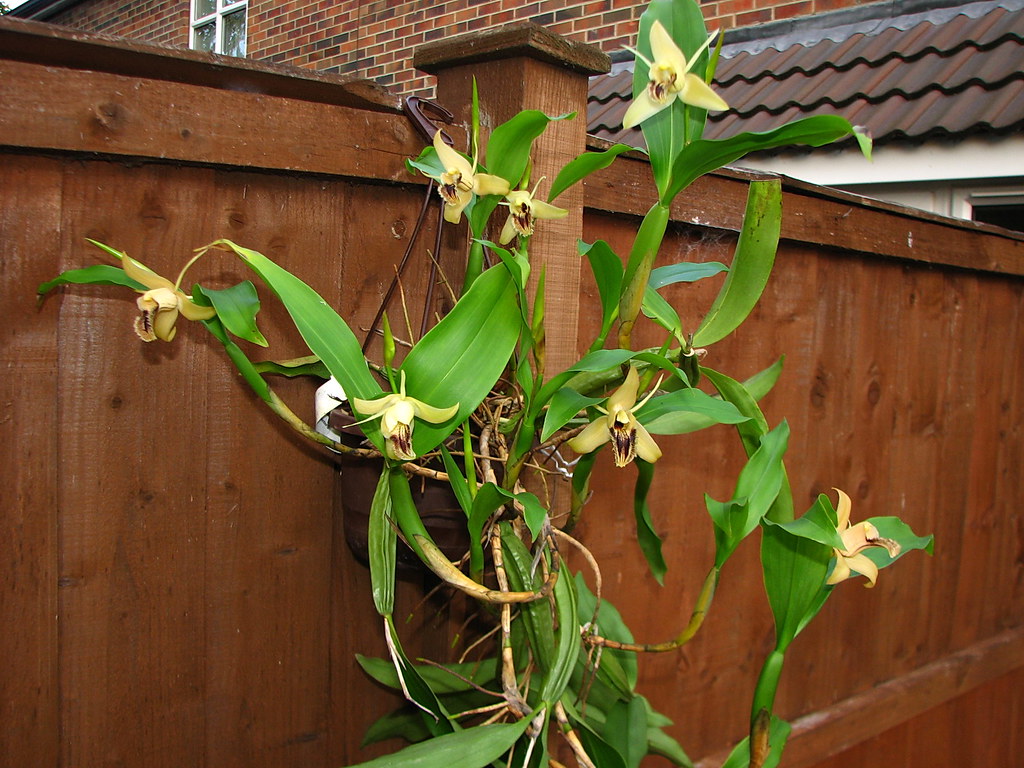Coelogyne fuliginosa is an orchid species identified by lodd. We collected fresh leaves of coelogyne fimbriata and coelogyne ovalis from jiangxi and yunnan provinces in china, respectively.
Coelogyne Ovalis Care. Please note that the plant will ship without flowers. Orchid digest vol 63 #2 1999 photo fide;
 Все форумы > Род Целогина (Genus Coelogyne, Orchidaceae) From molbiol.ru
Все форумы > Род Целогина (Genus Coelogyne, Orchidaceae) From molbiol.ru
Again, temperature ranges vary somewhat. It is common for the tips of leaves to brown off and is difficult to prevent. Orchidaceae is a plant family containing an estimated 28,000 species of flowering plants in addition to about 100,000 hybrids and cultivars commonly called orchids.
Все форумы > Род Целогина (Genus Coelogyne, Orchidaceae)
Orchidaceae is a plant family containing an estimated 28,000 species of flowering plants in addition to about 100,000 hybrids and cultivars commonly called orchids. Approximately 50 g of fresh leaves of each species were sterilized with 75% ethanol and clean with distilled water, and then these materials were stored in a 4 °c refrigerator prior to further processing. Orchids grow naturally all over the world in just about every habitat except for glaciers. Her you find all our orchids, hoya (waxflowers) and accessories.
 Source: flickr.com
Source: flickr.com
Orchids of sumatra j b comber 2001 as c padangensis photo good; Culture information and photos for this orchid are commonly detailed under the currently accepted name of coelogyne ovalis. The refusal of the flowering of the orchid can be caused by the too hot content of the plant (especially at the time of the formation of new pseudobulbs), the.
 Source: travaldo.blogspot.com
Source: travaldo.blogspot.com
A variety of growing media will provide adequate cultural conditions: Orchidaceae is a plant family containing an estimated 28,000 species of flowering plants in addition to about 100,000 hybrids and cultivars commonly called orchids. It will soon outgrow whatever it is in/on and, like the image above, all you will see will be aerial roots and runners. Orchids grow naturally.
 Source: pinterest.com
Source: pinterest.com
Water regularly during the summer, about once every two days and gradually reduce in the winter. Care should be taken to avoid water standing in the new growths. Her you find all our orchids, hoya (waxflowers) and accessories. Check your local climate for frost Approximately 50 g of fresh leaves of each species were sterilized with 75% ethanol and clean.
 Source: flickriver.com
Source: flickriver.com
Coelogyne ovalis is an orchid specially selected by araflora. The refusal of the flowering of the orchid can be caused by the too hot content of the plant (especially at the time of the formation of new pseudobulbs), the lack of sufficient differences between night and day temperatures, poor lighting or the general stress. Orchids of nagaland deorani & naithani.
 Source: araflora.com
Source: araflora.com
Plant grows from cool to warm temperatures in partial shade. A variety of growing media will provide adequate cultural conditions: The incredibly diverse orchid family is also widespread. Orchids of nagaland deorani & naithani 1995 drawing ok; Lindlyana vol 15 no 4 2000;
 Source: pinterest.com
Source: pinterest.com
A variety of growing media will provide adequate cultural conditions: Lindlyana vol 15 no 4 2000; Orchid digest vol 63 #2 1999 photo fide; Water about once every two to three weeks and gradually increase watering as new. The refusal of the flowering of the orchid can be caused by the too hot content of the plant (especially at the.
 Source: molbiol.ru
Source: molbiol.ru
Orchids of nagaland deorani & naithani 1995 drawing ok; Coelogyne page subfamily epidendroideae, tribe coelogyeae, subtribe coelogyninae. It will soon outgrow whatever it is in/on and, like the image above, all you will see will be aerial roots and runners. Orchids grow naturally all over the world in just about every habitat except for glaciers. Masdevallia coccinea orchid cuture and.
 Source: botanikfoto.com
Source: botanikfoto.com
It is common for the tips of leaves to brown off and is difficult to prevent. A most interesting group of 150 species that is found in all four climes, hot, warm, cool and cold and in most all of asia east of india and on into indonesia and fiji. Orchids grow naturally all over the world in just about.






